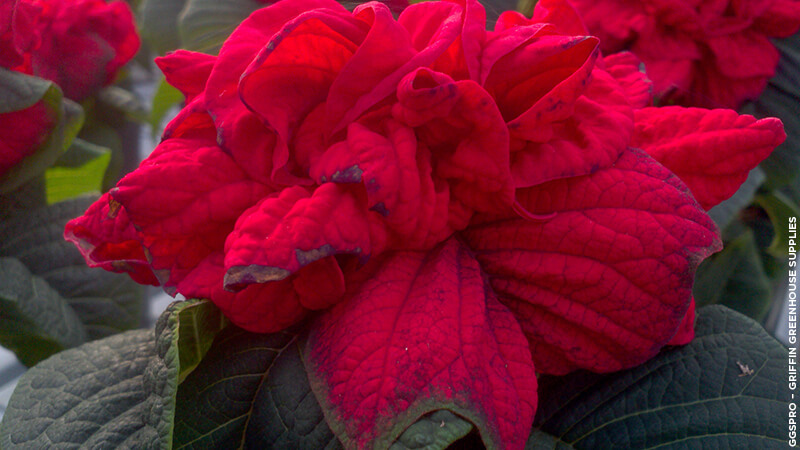Thwarting a Potential Cannabis Catastrophe With Science

By harvesting clean meristem tissue from cannabis plants in a tightly controlled environment and rigorously testing this tissue for disease, Front Range Biosciences’ Clean Stock program can generate clean, viroid-free plant stock for propagation. Photo: Front Range Biosciences
An insidious disease is stalking the cannabis industry. Transmitted from plant to plant through cuttings with shared tools, and through seeds, the viroid can lay dormant and undetected. Over time, however, growers may notice changes in their grows: stunted growth, smaller flowers, yellowed leaves, and limited cannabinoid and terpene production. Is this phenomenon – commonly referred to as dudding – the sign of overstressed plants, or the harbinger of something much worse?
The answer will have far-ranging consequences and could cost cultivators millions in lost revenue.
Hop Latent Viroid (HLVd) is one of the biggest threats to the cannabis industry. The disease is difficult to identify and can rapidly spread undetected throughout a facility. According to MJBizDaily, California operators have lost 10% to 30% of their crop from the disease, and internal data shows infected plants can also suffer up to a 35% loss in cannabinoid content such as THC, and up to 70% reduction in yield.
The viroid mostly spreads through mechanical transmission, such as the sharing of tools between infected and uninfected plants. Because plants can remain asymptomatic for weeks, the threat continues to grow and does not appear to be waning any time soon. Growers turning to seed as a way to mitigate risk still need to contend with a seed transmission rate up to 8%. Without taking steps now to eradicate HLVd where it exists today, the viroid could cause significant supply chain disruptions for years to come.
Thankfully, agricultural science provides a detailed roadmap to manage HLVd and mitigate its potentially devastating impact on the industry. Taking a page from other commercially cultivated crops like hops and strawberries, we can begin to establish a scientifically rigorous protocol designed to eradicate HLVd from mother stock and then establish production protocols to help ensure that future generations remain disease free.
Start Clean, Stay Clean
As defined by the Clean Plant Center Northwest at Washington State University, part of the National Clean Plant Network, “A clean plant, also known as ‘foundation-level’ or ‘G1’ is a plant line, variety, or cultivar that has been a) tested for, and found free of, economically important and/or harmful plant viruses and virus-like organisms, and b) been maintained under controlled conditions to prevent reinfection.
The Clean Plant Center Northwest has published a six-step process to establish clean plants across a variety of plant species. Depending on plant type, the entire process can take anywhere from 12 months to as long as three or four years. This methodology helps ensure that harmful and economically important pathogens are identified and removed before a plant is distributed to the marketplace.
- Propagation of source material – Source material from the variety is propagated onto virus-tested rootstock or via rooted cuttings and/or tissue culture.
- Initial diagnostics – Once propagated and actively growing, tissue samples are collected and tested for pathogens. Various testing methodologies may be employed including polymerase chain reaction (PCR), high-throughput sequencing (HTS) and biological indexing assays. Plants found to be positive by any of these methods are considered infected.
- Virus elimination – Infected plants enter the virus elimination process by which pathogens are removed using a combination of temperature-based therapies, targeted tissue culture, and micropropagation.
- Follow-up diagnostics – To confirm that virus elimination was successful, plants generated during the virus elimination process are tested for pathogens identified during the initial diagnostic step.
- Final diagnostics – Plants that passed all the previous steps are tested again against a species-specific list of harmful or economically important pathogens by PCR. This is to ensure no pathogens were missed.
- Foundation and distribution – Once a clean plant has been produced it can be maintained under contained conditions to prevent reinfection, and be regularly re-tested to ensure that it remains clean. The offspring from these clean mother plants can be safely distributed back into the marketplace.
At Front Range Biosciences (FRB), we used this methodology as the framework for a year-long effort to clean plants infected with HLVd as part of a broader strategy to mitigate risk of spread throughout a facility. Because of how easily transmissible Hop Latent Viroid can be, we exclusively employed meristem tissue culture to propagate clean stock.
Meristem Tissue Culture Advantages
For more than 50 years, the Department of Plant Sciences at the University of California, Davis (UC Davis) has been the home of one of the most successful strawberry breeding programs in the world. Foundation Plant Services (FPS) has facilitated meristem tissue culture propagation for strawberries and other important commercial agricultural crops Front Range Biosciences utilizes meristem tissue culture as a foundation for our Clean Stock program because of the myriad short- and long-term benefits this technique provides.
A meristem plant is the term used in industry to refer to a plant grown in tissue culture from a meristem tip. A meristem tip consists of meristem tissue plus one or two leaf primordia and is approximately 0.4 to 0.5 mm in size. Meristem tissue is found in young growing points where cells are dividing but have not yet differentiated into leaves, stems, or other organs.
Producing meristem plants eliminates pathogens from planting material and reinvigorates plants themselves. Meristem plants produce many more daughter plants than are produced by conventionally propagated plants.
Research and experience at UC Davis with strawberries has shown that a plant that has been through heat treatment and tissue culture is more vigorous and can produce many more daughter plants than conventionally propagated plants. One explanation is that the plant regains juvenile traits which are thought to have a more vegetative rather than a fruitive growth habit. Runner productivity of tissue culture derived plants can be expected to be at least 50% more than conventionally propagated plants, reports range from no increase to 400% more (Swartz, et al. 1981; Scott, et al. 1985; Merkle, 1993). Within the FPS program, one meristem plant can bear between 300 to 800 daughter plants in one season depending on cultivar and growing conditions. Up to 2,000 daughter plants from one meristem plant have been reported.
By harvesting clean meristem tissue from cannabis plants in a tightly controlled environment and rigorously testing this tissue for disease, FRB’s Clean Stock program can now generate clean, viroid-free plant stock for propagation. This breakthrough approach can mitigate the risk of costly cannabis crop failure and bolster the productivity of mother stock representing a huge double-win for the entire industry.
The FRB Methodology
To address Hop Latent Viroid in our Clean Stock program, we followed similar methodologies established by UC Davis and Washington State University programs – starting with confirmed Hop Latent Viroid positive material gathered from six Cannabis sativa varieties and initiated into meristem tissue culture.
After an initial growth and maturation period of these HLVd-positive plants, we culture indexed each plant to identify any potential bacterial infections. Plants testing positive for additional bacterial infections were removed from the environment, and the remaining HLVd positive plant material (representing all varieties) was subjected to a proprietary thermotherapy protocol. Meristems that came from plants that survived the thermotherapy treatment were isolated and transferred to a new medium to promote growth for subsequent processing through meristem tissue culture.
Once plants grew, they were again individually subjected to in vitro HLVd testing. Plants testing positive were discarded, and the remaining healthy plants were maintained and re-tested four to dix weeks later to confirm the absence of HLVd. Given the ability of HLVd to lay dormant, this secondary validation step was key to ensuring the cleaning process worked and that this new plant stock was indeed clean.
With this new method to clean plants from HLVd infection now validated, we have a proven, proprietary process to create disease-free germplasm using a combination of tissue culture and thermotherapy techniques.
Clean Stock, Clean Processes
Clean stock is only the first step. Employing an end-to-end approach of Hop Latent Viroid prevention, detection, and eradication can help the industry mitigate the HLVd problem by ensuring that grows are populated with clean, high-quality plants, generating a greater return on investment for cultivators as well as a more consistent product for consumers.
Basic best operational practices can help prevent HLVd from spreading within a facility. Growers should minimize the number of people who have access to plants in both mother stock and grow rooms and maintain specific sanitation protocols for tools, including not sharing tools between plants, greenhouses, or even sub-locations within a greenhouse, without proper sanitation. There should be strict protocols for cleaning tools, handling plants, cutting clones, and even transferring plants between greenhouse locations.
Growers should create and maintain a separate mother stock area that is isolated and limits exposure to human and plant contact and continually replenish mother stock with HLVd-tested and certified clean replacements from tissue culture. Growers reliant on nursery stock should quarantine new plants from existing stock until the new plants are tested and verified as clean before being introduced into the system.
The presence of HLVd can only be confirmed through molecular testing. Testing laboratories nationwide are rapidly scaling the capacity to test for HLVd. Expanded access to HLVd molecular testing will enable cultivators to continually monitor and assess the health of both mother stock and grow rooms and quickly identify and quarantine any infected stock. That said, testing is not a one-and-done proposition. Tests should be administered continuously, assessing varying parts of the plant canopy from top to bottom where and if possible.
Our ability to now collect, test, and treat meristem culture is an important leap forward in eradicating not just HLVd, but any number of catastrophic diseases and infections that can impact cannabis cultivation. Working with tissue culture provides benefits beyond the ability to clean infected plants. For example, in-vitro testing can be more effective at identifying pathogens versus in-vivo testing because there is less material to test, making it less likely that a pathogen is missed in sampling. More precise testing improves our ability to prevent spread and maintain clean material for plant propagation. Simply put, starting the cannabis supply chain with tissue culture, rather than the seed or cutting level, can mitigate risk and ensure quality.
Starting clean, preventative processing, and testing vigilance, combined with the newfound ability to clean infected plants, finally provides the industry with a full suite of tools needed to effectively eliminate Hop Latent Viroid, and whatever might come next. Growers implementing FRB’s Clean Stock end-to-end approach can assuredly maintain high-quality, true-to-type plants that produce consistent terpene levels and high yields each and every harvest.









